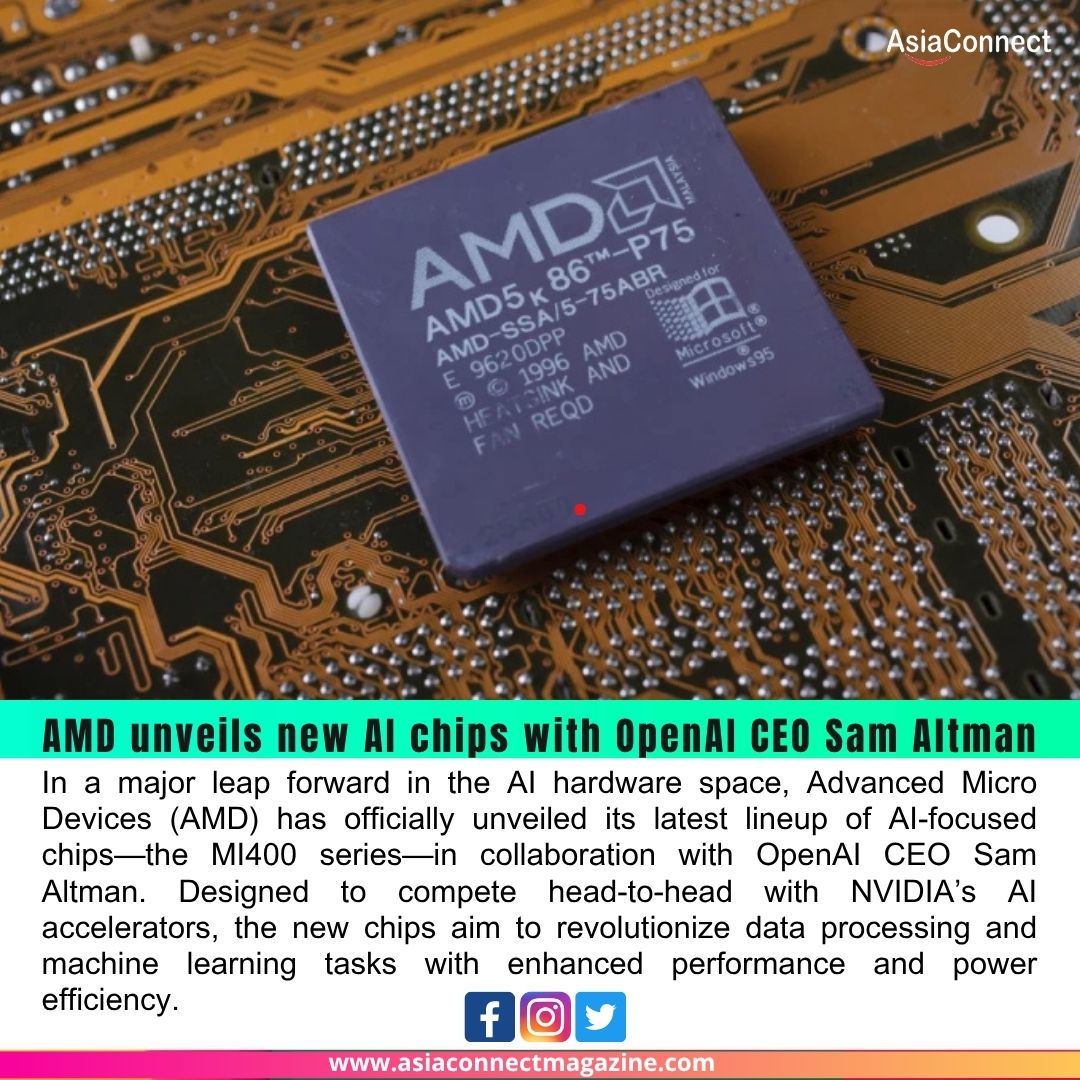In a major leap forward in the AI hardware space, Advanced Micro Devices (AMD) has officially unveiled its latest lineup of AI-focused chips—the MI400 series—in collaboration with OpenAI CEO Sam Altman. Designed to compete head-to-head with NVIDIA’s AI accelerators, the new chips aim to revolutionize data processing and machine learning tasks with enhanced performance and power efficiency.
A highlight of the launch is Helios, a new rack-scale AI system integrated into the MI400 architecture. Named after the Greek sun god, Helios is expected to power next-generation AI data centers, enabling faster computations, seamless scalability, and reduced energy consumption for large-scale machine learning models.
AMD and OpenAI: A Strategic Collaboration
The presence of Sam Altman, CEO of OpenAI, at the unveiling event signals the growing alignment between AI developers and chip manufacturers. With the exponential growth of AI applications, from generative models to enterprise automation, there is a rising demand for robust, efficient, and scalable hardware infrastructure. AMD’s partnership with OpenAI reflects this critical need to bridge software innovation with hardware evolution.
Altman praised AMD’s efforts, highlighting the importance of diverse suppliers in the AI chip market to promote innovation, drive down costs, and improve accessibility. He emphasized that platforms like Helios could serve as the backbone for next-gen AI systems, making cutting-edge compute infrastructure more efficient and accessible to the broader tech ecosystem.
MI400 Series: Powering the AI Future
The AMD MI400 chips are part of the company’s expanding Instinct GPU family, purpose-built for AI training, inference, and high-performance computing (HPC) workloads. Leveraging AMD’s latest architecture, these chips offer:
- Enhanced processing power for complex deep learning models
- Optimized memory bandwidth for faster data access
- Scalable design ideal for rack-level and cloud-scale deployments
- Energy-efficient performance, reducing operational costs for data centers
The integration of Helios, AMD’s rack-scale AI system, marks a turning point in how compute-intensive tasks are handled in the AI era. It allows developers and enterprises to scale their AI infrastructure quickly while maintaining top-tier performance and sustainability.
Competing in a Growing Market
With NVIDIA continuing to dominate the AI chip landscape, AMD’s MI400 lineup positions the company as a formidable competitor. Industry analysts believe the entry of AMD with innovations like Helios could democratize access to AI computing resources and stimulate faster innovation across startups, enterprises, and research institutions.
AMD’s focus on open ecosystems, support for popular AI frameworks, and deep integration with cloud providers make the MI400 chips highly attractive for developers looking for alternatives to closed proprietary solutions.
Conclusion
The launch of AMD’s MI400 AI chips and the introduction of Helios marks a bold step toward reshaping the AI hardware ecosystem. With support from influential figures like Sam Altman, AMD is sending a clear signal that it is ready to lead in the AI computing race. As AI workloads grow more complex and compute-hungry, solutions like the MI400 and Helios could become the foundation for the future of artificial intelligence.





